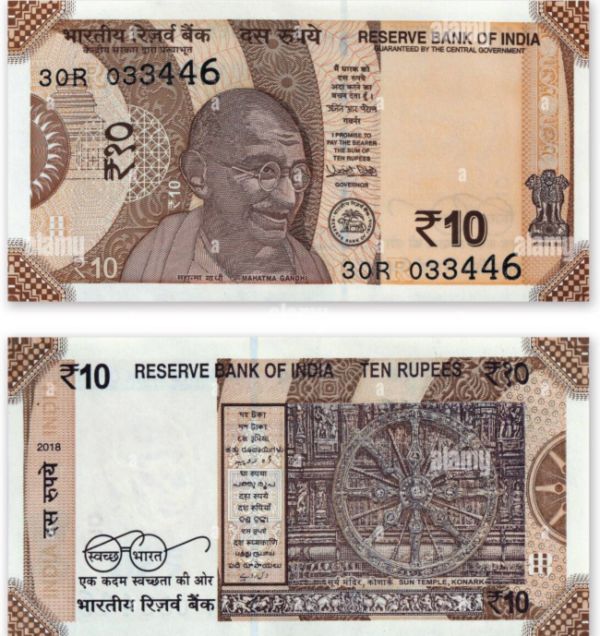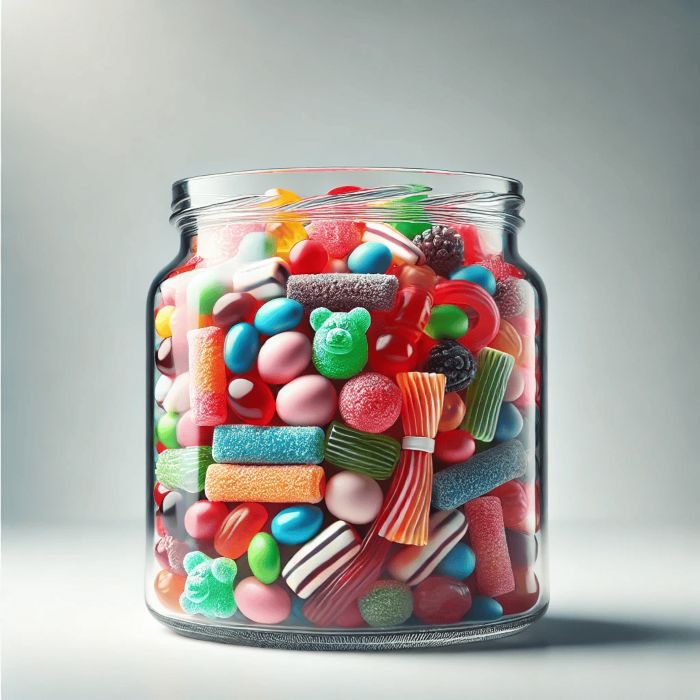Addition & Subtraction For Grade 4 Study Guide and Worksheets
This is a comprehensive lesson plan for teaching addition and subtraction to class 4 students. The difficulty level is one step higher than grade 3, but it aims to give class 4 students an understanding of the concepts. The lesson on addition and subtraction class 4 is designed to make the concepts easy and engage students with activities like quizzes, practice questions and worksheets, visual aids like images and videos, and real-life examples.
Teachers can use this guide as a reference for delivering the concepts to students and engaging them in the classroom with the various questions and examples given on this page.
For parents, there are 24 downloadable class 4 addition and subtraction worksheets that they can use for their kids.
The learning outcomes are as follows:
- Evaluate the addition problem.
- Addition of 5 digit number with regrouping and without regrouping.
- Addition of 6 digit number with regrouping and without regrouping.
- Evaluate the subtraction problem.
- Subtraction of 5 digit number with regrouping and without regrouping.
- Subtraction of 6 digit number with regrouping and without regrouping.
About Addition and Subtraction
Addition and subtraction are the two fundamental concepts in mathematics.
Subtraction is about taking things away or finding what is left. For example, if you have 8 candies and you give 3 to your friend, you will have 5 candies left. We use the '-' sign, which means "minus" or "take away".
With this idea, let us try to understand addition first.
What Is Addition?
Addition: The process of combining two or more numbers is called addition.
Sum: The result obtained by addition is called sum.
Addends: The numbers that are added to get the sum are called the addends.
What is the basic law of addition?
The law of addition states that if you add a couple of numbers together, the result is the sum. Alternatively stated, adding two or more numbers together yields the total amount of those numbers.
Mathematically expressed: a + b = c;
Where a and b are the addends and c is the sum.
Want to check more on addition? Click here to watch a video
What is addition with regrouping?
Regrouping, also known as "carrying", occurs when the sum of the digits in one place value column is 10 or more. In such cases, we regroup or carry over the excess value to the next higher place value.
Steps to Perform Addition with Regrouping:
Step 1. Arrange the numbers so that the digits align by place value (ones, tens, hundreds, etc.).
Step 2. Start adding the numbers from the one's place and continue to the left.
Step 3. If the sum of a column is 10 or greater, write down the digit in the ones place and carry over the digit in the tens place to the next column on the left.
Step 4. Continue the process with the remaining place values, adding any carried-over numbers.
Example: 2354 + 1732

Try these yourself! -
1. Add 328 and 495
2. Add 763 and 289
3. Solve: 574 + 638 + 127
4. Add 1,452 and 2,375
Let us understand subtraction of 5-Digit, 6-Digit numbers with and without borrowing.
Addition of 5-Digit Numbers With Regrouping:
Example: 44784 + 32147
Step 1. At Ones, 4 + 7 = 11 > 10. Placing 1 in Ones place, carry over 1 to the Tens place. At Tens, 8 + 1 = 9.

Step 2. At Tens place, 9 + 4 = 13 > 10. Putting 3 in Tens place, carry over 1 in Hundredths place. At hundredths place, 7 + 1 = 8.
Step 3. At Hundredths place, 8 + 1 = 9.

Step 4. At Thousandths place, 4 + 2 = 6

Step 5. At Ten Thousandths place, 4 + 3 = 7

The result is 76931.
Try these yourself! -
- 56712 + 23987 = ?
- 78930 + 56889 = ?
Addition of 5-Digit Numbers Without Regrouping:
Example: 44132 + 24246
Step 1. At Ones place, 2 + 6 = 8.

Step 2. At Tens place, 3 + 4 = 7.

Step 3. At Hundredths place, 1 + 2 = 3

Step 4. At Thousandths place, 4 + 4 = 8

Step 5. At Ten Thousandths place, 4 + 2 = 6.

The result is 68378.
Try these yourself! -
- 62312 + 25132 = ?
- 13420 + 53242 = ?
Addition of 6-Digit Numbers With Regrouping:
Example: 456397 + 486931
Step 1. At Ones, 7 + 1 = 8

Step 2. At Tens place, 9 + 3 = 12, carry over 1 to Hundredths place. So 3 + 1 = 4 at hundredths place.

Step 3. At Hundredths place, 4 + 9 = 13 > 10. So putting 3 and carrying over 1 to Thousandths place. 6 + 1 = 7.

Step 4. At Thousandths place, 7 + 6 = 13 > 10. So, putting 3 and carrying over 1 to Ten Thousandths place. 5 + 1 = 6.

Step 5. At Ten Thousandths place, 6 + 8 = 14 > 10. So, putting 4 and carrying over 1 to Lakhs place.

Step 6. At Lakhs place, 5 + 4 = 9.

The result is 943328.
Try these yourself! -
- 789430 + 459987 = ?
- 958937 + 678950 = ?
Addition of 6-Digit Numbers Without Regrouping:
Example: 321687 + 243212
Step 1. At Ones place, 7 + 2 = 9.

Step 2. At Tens place, 8 + 1 = 9.

Step 3. At Hundredths place, 6 + 2 = 8.

Step 4. At Thousandths place, 1 + 3 = 4.

Step 5. At Ten Thousandths place, 2 + 4 = 6.

Step 6. At Lakhs place, 3 + 2 = 5.

The result is 564899.
Try these yourself! -
- 234126 + 142310 = ?
- 145213 + 432121 = ?
Want to solve addition problems faster? Check our mental maths page for addition!
Concept: What Is Subtraction?
Subtraction: The process of finding the difference between the two numbers is called subtraction. The bigger number is subtracted from the smaller number.
Minuend: The bigger number from which the smaller number is subtracted is called minuend.
Subtrahend: The smaller number which is subtracted from the bigger number is called subtrahend.
Difference: The result of subtraction is called difference.
What is the basic law of subtraction?
The law of subtraction states that if you subtract a number from another number, the result is called the difference.
Mathematically expressed: a - b = c;
Where a is minuend and b is the subtrahend and c is the difference.
Want to check more on subtraction? Click here to watch a videoWhat is subtraction with borrowing?
Borrowing occurs when the digit in the minuend is smaller than the corresponding digit in the subtrahend; and we "borrow" 1 from the next higher place value in the minuend.This borrowing effectively reduces the next higher place digit by 1 and adds 10 to the current place value, enabling the subtraction.
Steps to Perform Addition with Borrowing:Step 1: Arrange the numbers so that the digits align by place value (ones, tens, hundreds, etc.).
Step 2: Start subtracting the number from the ones place and continue to the left.
Step 3: When the minuend is smaller than the subtrahend, borrow 1 from the digits in the left column.
Step 4: Continue the same process.
Example: 2354 - 1732
Try these yourself! -
1. Subtract 471 from 890
2. Subtract 283 from 835
3. Solve: 762 - 493
4. Subtract 4563 from 7415
Let us understand subtraction of 5-Digit, 6-Digit numbers with and without borrowing.
Subtraction of 5-Digit Numbers With Borrowing:
Example: 45324 - 32147
Step 1. At Ones place, 4 < 7. Hence, borrowing 10 from tens. 4 + 10 = 14.14 - 7 = 7. At Tens, 2 - 1 = 1.

Step 2. At Tens, 1 < 4. Hence, borrowing 10 from hundredths. 1 + 10 = 11.
11 - 4 = 7. At Hundredths, 3 - 1 = 2.

Step 3. At Hundredths, 2 - 1 = 1

Step 4. At Thousandths, 5 - 2 = 3

Step 5. At Ten Thousandths, 4 - 3 = 1

The result is 13177.
Try these yourself! -
- 56723 - 34989 = ?
- 89760 - 45998 = ?
Subtraction of 5-Digit Numbers Without Borrowing:
Example - 67954 - 36141
Step 1. At Ones place, 4 - 1 = 3.
Step 2. At Tens place, 5 - 4 = 1

Step 3. At Hundredths place, 9 - 1 = 8

Step 4. At Thousandths place, 7 - 6 = 1

Step 5. At Ten Thousandths place, 6 - 3 = 3

The result is 31813.
Try these yourself! -
- 67896 - 12432 = ?
- 89779 - 43211 = ?
Subtraction of 6-Digit Numbers With Borrowing:
Example: 391542 - 237258
Step 1. At Ones place, 2 < 8. Hence, borrowing 10 from tens. 2 + 10 = 12.
12 - 8 = 4. At Tens, 4 becomes 3.

Step 2. At Tens place, 3 < 5. So borrowing 1 from Hundredths place. 3 becomes 13, and 5 becomes 4.

Step 3. At Hundredths place, 4 > 2. So, 4 - 2 = 2.

Step 4. At Thousandths place, 1 < 7, borrowing 10 from Ten Thousandths place. So, 1 in Thousandths place becomes 11. And 9 in Ten Thousandths place becomes 9 - 1 = 8.

Step 5. At Ten Thousandths place, 9 - 1 = 8. So, 8 - 3 = 5

Step 6. Similarly at Lakhs place, 3 - 2 = 1.

The result is 154284.
Try these yourself! -
- 834521 - 598979 = ?
- 732412 - 398768 = ?
Subtraction of 6-Digit Numbers Without Borrowing:
Example: 685689 - 474248
Step 1. At Ones place, 9 - 8 = 1
Step 2. At Tens place, 8 - 4 = 4

Step 3. At Hundredths, 6 - 2 = 4

Step 4. At Thousandths place, 5 - 4 = 1

Step 5. At Ten Thousandths place, 8 - 7 = 1

Step 6. At Lakhs place, 6 - 4 = 2

The result is 211441.
Try these yourself! -
- 989789 - 632414 = ?
- 879969 - 343212 = ?
Want to solve subtraction problems faster? Check our mental maths page for subtraction
What are some real-life examples of addition and subtraction?
1. Counting Money:

If you have a Rs. 10 note and receive a Rs. 20 note from your friend, how much money do you have?
Addition: Rs. 10 + Rs. 20 = Rs. 30
You have Rs. 30 in total
Now, from that 30 rupees, you buy a toy car for Rs. 8. How much money do you have left after the purchase?
Subtraction: Rs. 30 − Rs. 8 = Rs. 22
You have Rs. 22 left.
2. Books in a Backpack:

You have 5 books in your backpack. Your friend gives you 3 more books. How many books do you have in your backpack now?
Addition: 5 books + 3 books = 8 books
Your book has 200 pages. You've already read 75 pages. How many pages do you still need to read?
Subtraction: 200 pages − 75 pages = 125 pages
You need to read 125 pages to finish the book!
3. Shopping:

If you buy a shirt for Rs. 500 and a pair of pants for Rs. 1000, the total cost is the sum of the two prices:
Addition: Rs. 500 + Rs. 1000 = Rs. 1500
You will spend Rs. 1500 in total.
You get a discount of Rs 250. How much do you have to pay?
Subtraction: Rs. 1500 - Rs. 250 = Rs. 1250.
4. Candies:

The jar has 50 candies. You add 30 candies to it. How many candies are there in the jar?
Addition: 50 candies + 30 candies = 80 candies.
Now you eat 18 candies, how many candies do you have left?
Subtraction: 80 candies − 18 candies = 62 candies.
5. Apples:

You pick 4 apples from one cart and 6 apples from another. How many apples do you have in total?
Addition: 4 apples + 6 apples = 10 apples
While at home, you eat 2 apples. How many apples are left?
Subtraction: 10 apples - 2 apples = 8 apples
6. Marbles:

You start with 7 marbles, and your friend gives you 5 more marbles. How many marbles do you have now?
Addition: 7 marbles + 5 marbles = 12 marbles
You give 3 marbles to your sister. How many marbles do you have now?
Subtraction: 12 marbles - 3 marbles = 9 marbles
7. Crayons:

Your teacher has 70 crayons for the class. She brings 40 crayons more. How many crayons are with the teacher?
Addition: 70 crayons + 40 crayons = 110 crayons.
Some students have used 40 crayons. How many crayons are left with the teacher now?
Subtraction: 110 crayons - 40 crayons = 70 crayons.
8. Cookies:
.jpg)
Your mother had cooked 10 cookies for snacks in the evening.
Out of those, you had eaten 4 cookies. So, how many cookies were left?
Addition: 10 cookies - 4 cookies = 6 cookies.
Seeing this, your mother prepared another 10 cookies at night. How many cookies were there in total then?
Subtraction: 6 cookies + 10 cookies = 16 cookies.
Fun facts about addition and subtraction:
So, here are some fun and interesting facts about addition and subtraction:
-
Addition sum is Ancient: Adding is an ancient concept. The Egyptians and Babylonians used simple addition in their early number systems dating back over 4,000 years!
-
Zero's Role: The number 0 is the additive identity. Adding zero to any number leaves it unchanged (for example, 5 +0=5).
-
First Addition Table: Greek and Roman scientists discovered first the origin of adding tables. They lead our modern adding table in use.
-
Adding Even Numbers: When you add two even numbers, the sum is always even. Example: 4 + 6 =10
- If 0 is subtracted from any number then the number remain itself. Example: 560 – 0 = 560
Summary of addition & subtraction:
Addition & Subtraction Quiz: Try it yourself and build confidence!
1. Tim has 500 jelly beans. He eats 127 of them. How many jelly beans does Tim have left?
a) 373
b) 487
c) 375
d) 427
2. 532 + 478 = ?
a) 1,000
b) 1,010
c) 1,020
d) 1,030
3. You have 1,000 balloons. You give 263 balloons to your friends. How many balloons do you have now?
a) 750
b) 737
c) 743
d) 700
4. A dragon has 987 gold coins. He loses 459 coins in a treasure chest. How many coins are left in the chest?
a) 528
b) 487
c) 498
d) 500
5. A farmer harvested 1,256 apples and then picked 432 more. How many apples does he have now?
a) 1,588
b) 1,668
c) 1,688
d) 1,678
6. A superhero has 852 superpower batteries. She uses 453 batteries to save the day. How many batteries are still in her utility belt?
a) 407
b) 400
c) 389
d) 397
7. You had 444 cupcakes. A squirrel steals 275 cupcakes. How many cupcakes do you have left?
a) 169
b) 159
c) 174
d) 164
8. 7,125 + 5,432 = ?
a) 12,457
b) 12,557
c) 12,457
d) 12,647
9. A bakery sold 673 cakes in the morning and 529 in the afternoon. How many cakes did they sell in total?
a) 1,102
b) 1,202
c) 1,112
d) 1,132
10. Rani has 250 marbles, and her friend gives her 150 more. How many marbles does she have now?
a) 300
b) 350
c) 400
d) 450
Practice Worksheets:
Click to download the worksheets for hands-on practice!Addition:
Easy Level Worksheets
Intermediate Level Worksheets
Advanced Level Worksheets
Subtraction:
Easy Level Worksheets
Intermediate Level Worksheets
Advanced Level Worksheets
Explore More Resources:
Check out our other pages to strengthen your concepts.
Orchids' Learning Materials:
Click to download the e-books
Things you have learnt!
- Addition and subtraction are foundational math skills.
- Grade 4 students learn to add and subtract larger numbers, like 5-digit and 6-digit ones, to build their confidence and skills.
- Addition:
- Combines numbers to find totals.
- Helps solve everyday problems.
- Subtraction:
- Helps figure out what’s left.
- Allows for comparing amounts and finding differences.
- Consistent practice helps students become more confident and prepares them for more advanced math concepts in the future.

